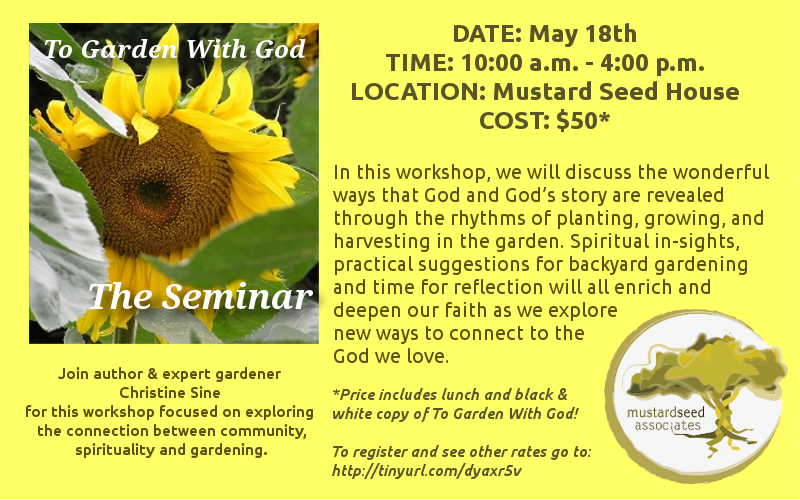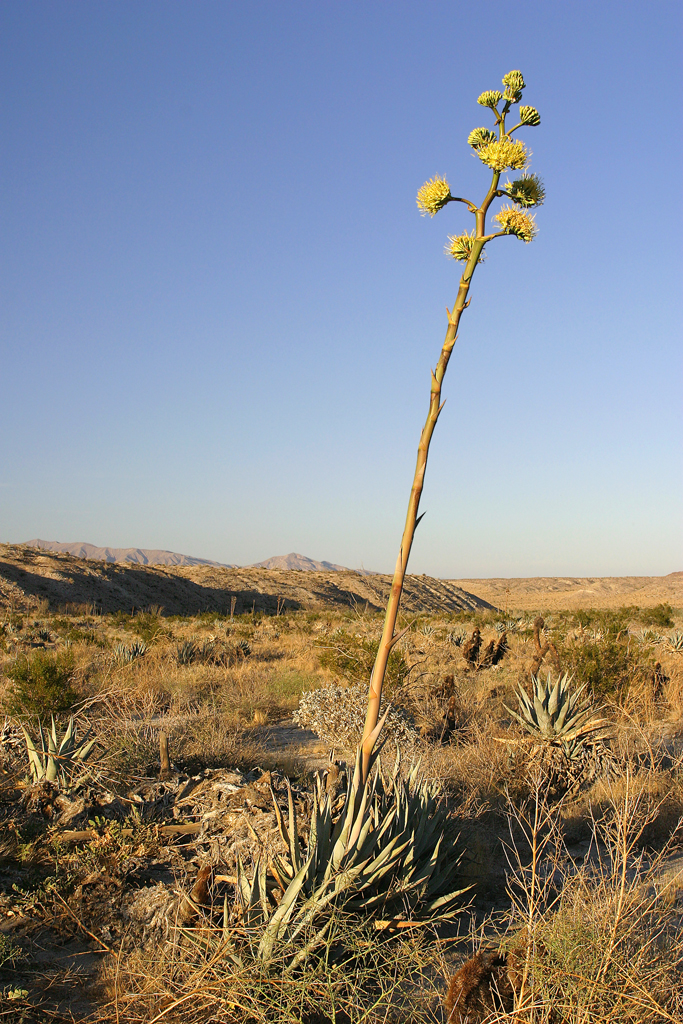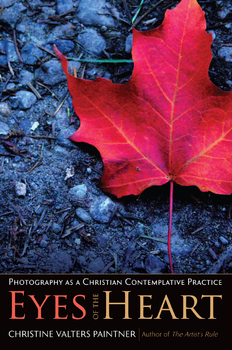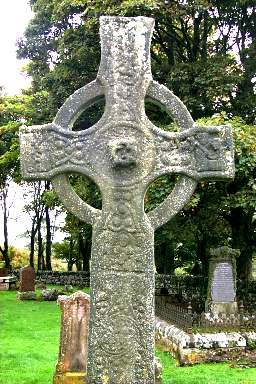Last chance to sign up for the To Garden with God seminar at the Mustard Seed House on Saturday. Or contact me for details of the seminar in Port Townsend May 25th.
Pentecost icon via Wikimedia
Each year I like to post a new list of resources for special days in the lectionary. Today’s list is an updated resource list for Pentecost.
This is the day when we celebrate:.
- The coming of the Holy Spirit and the infilling of Jesus’ disciples with the power to go out and change the world
- The great multi cultural gathering that we catch a glimpse of as we watch the spirit fall and suddenly everyone is able to understand each other – not all speaking the same language but able to understand each other in their own languages. Acts 2:11.
- Pentecost is traditionally the time that many churches pray for the peace of our world in which at times there seems to be so little cross cultural understanding.
Last year’s resources focused on visual resources and Christian art that give us images of Jesus from different cultural perspectives.
This year’s list provides some of the best sites I have found from around the world with resources for Pentecost. I would love to expand this list so if you know of other resources that you think should be added and help us to think creatively about this important celebration please let me know.
From Australia & New Zealand
Laughing Bird Liturgical Resources
From Bosco Peters in New Zealand
From South Africa
Sacredise.com always produces wonderful resources
From U.K
Jonny Baker always provides great resources in his worship tricks. You check out the general list for pentecost here.
I particularly like this link to a great Pentecost meditation by Mark Berry.
From Canada
Re-worship always provides excellent resources and this Pentecost list is no exception
From U.S.
The Text This Week has some of the most comprehensive resource lists around. Their pentecost list is well worth visiting.
Another good list is Resources from the Calvin Institute
And for a short meditation I enjoyed this video by Franklyn Shaefer
From U.S.
A beautiful Pentecost poem from Outside the Box

I have adapted the following prayer from one I wrote a few years ago for Pentecost. Enjoy.
God, your Spirit fell like tongues of fire,
The seal of your ownership is on us,
You have breathed your Holy Spirit into our hearts.
(Pause to invite the Holy Spirit into your day’s activities)
God, your spirit fell like tongues of fire.
It filled those who were empty,
It empowered those who were weary.
God, your spirit fell like tongues of fire.
It brought together those who were divided,
It reassured those who were afraid.
God, your spirit fell like tongues of fire.
By its power we can walk together as one,
By its power we can find strength to share.
God, your spirit fell like tongues of fire.
By its power we can find freedom in loving each other,
By its power we can find life in you.
Read scriptures for Day of Pentecost from daily lectionary
Eternal Spirit
Earth-Maker, Pain-bearer, Life-giver,
source of all that is and that shall be,
Father and Mother of us all.
Loving God, in whom is heaven.
The hallowing of your name echoes through
the universe!
The way of your justice be followed by the peoples
of the earth!
Your heavenly will be done by all created beings!
Your commonwealth of peace and freedom
sustain our hope and come on earth.
With the bread we need for today, feed us.
In the hurts we absorb from one another, forgive us.
In times of temptation and test, spare us.
From the grip of all that is evil, free us.
For you reign in the glory of the power that is love,
now and forever.
Amen.
(This version of the Lord’s prayer from New Zealand Prayer book)
God, thank you for your spirit breaking down barriers within and without
Barriers that distort our ability to lead a life fully integrated with you and your ways
Forgive us for the times we have deliberately resisted the Spirit’s work
Life giving spirit, God’s advocate and guide, have mercy on us.
Forgive us God for the barriers we create within ourselves,
Barriers that resist your healing work and prevent us moving toward wholeness.
Forgive our self-centerdness, our anger, our fear of change, our lack of trust in your love.
Life giving spirit, God’s advocate and guide, have mercy on us.
Forgive us God, for the barriers we create between us and you,
Barriers that separate us from your love and the assurance of your salvation.
Forgive our busyness, our independence, our desire to go our own way.
Life giving spirit, God’s advocate and guide, have mercy on us.
Forgive us God, for the barriers we create between us and each other,
Barriers that separate us from neighbours near and far and inhibit mutual love and care.
Forgive our resentment of others, our love of control, our indifference to the poor.
Life giving spirit, God’s advocate and guide, have mercy on us.
Forgive us God, for the barriers we create between us and your beautiful creation,
Barriers that abuse your world and deny our responsibility as stewards.
Forgive our greed, our misuse of resources, our pollution of the environment.
Life giving spirit, God’s advocate and guide, have mercy on us.
God, by the power of your spirit, free us and break down these barriers.
Turn us away from the bondage of a life lived for ourselves and our own desires,
May your spirit guide us into the freedom of life lived for you and your purposes.
Life giving spirit, God’s advocate and guide, have mercy on us.
Glorious God and Father of our Lord Jesus Christ,
We go into this day knowing your Spirit dwells within us.
May your Counselor make us wise and help us understand what it means to know you.
May the Spirit’s fire ignite our hearts so that we understand the hope of being chosen by God.
May we discover the glorious blessings we share together with all God’s people.
God we go into this day knowing it is you who makes us stand firm in Christ
We are filled with your Spirit,
We are anointed to serve,
We go out to bring resurrection life.
May the grace of the Lord Jesus Christ, the love of God and the fellowship of the Holy Spirit be with you all, this day and forever.
Amen
This week I am continuing the series on Creating Sacred Space – Do We Need Churches, with contributions from friends and fellow bloggers. Today’s post comes from James Rempt who lives in the Mustard Seed House here in Seattle.
The elation of discovery has often gone hand in hand with the joy creativity for me. In moments of discovery just as with acts of creativity, its often as if some transcendent melody, some deeper truth, strikes a resonant frequency within me.
I’ve never had a moment I can think back on when I successfully created a sacred space. But to be certain, since I was a young boy, I have always been excited by my own discoveries while exploring nature: a frog species never seen by my own eyes, color variations on a common flower, a new tree with branches low enough to climb. As I child I would map the green belt in my neighborhood based on the discovery of such things.
The first time I recall discovering a sacred space I was about 9 years old. It was a whole new kind of discovery.
My father and I were on our first trip to the American southwest. These trips would become a yearly tradition for my dad and I for the next 10 years, and even now, as I am 28 and he is 70, we still make it a goal to continue the tradition when possible.
I was fortunate to be raised by a father who invested in me, focused on me, and lead me into adventure while directing me toward a deeper truth. It’s no coincidence, for me, that on this trip with my earthly father I experienced a sacred space full of the presence of God the Father.
That day, my father and I had spent a long time driving. Our goal was to experience and photograph the wild life in and around Anza Borrego Desert State Park in Southern California’s Colorado Desert. We had stopped at a store earlier that day to get sandwich fixings to prepare us for a late night of driving slowly along the open, relatively quiet roads, stopping to view scorpions, tarantulas, geckos and rattle snakes as they crawled across the solar charged asphalt.
We pulled into a large dirt turn out about 20 minutes after sunset. On the opposite side of the road from the turn out, the base foothills of some small mountains gently ascended. With our backs to these mountains, we looked south. My dad told me Mexico was in sight, but it all looked the same to me: an ever-dimming landscape of creosote bushes, tumbleweed, sand and dust.
About an hour previous, my father and I were driving, keeping our eyes pealed for “crepuscular” wildlife. I learned on that trip that crepuscular referred to animal foraging behaviors during dawn or dusk, a common characteristic of many forms of desert wildlife.
As my father walked around the car, he bent down and touched asphalt. “It’s definitely warm enough. Animals will be on the road”, he remarked.
He went around and opened the trunk, removing some rounded dinner roles, lunch meet and condiments from a small ice chest. In the increasing darkness, we quickly cobbled together a couple of small sandwiches while we leaned with our backs against the car, looking south. We ate in contented silence.
As my appetite became sufficiently quenched and the stars began to make their appearance, it was the stillness that suddenly drew me in. Never in my life had I experienced what I was experiencing at that moment: The gentle intermittent whir of the wind through the hearty desert brush was the only sound. I couldn’t see a single man made light. The air temperature was comfortably in the 90s, and within a few minutes there were more stars than I knew could fit in the night sky. It was like some invisible artist poked dozens of new pinholes in the darkening canvas above me each time I blinked.
As I continued to meditate on what was before me, I realized that this was the first time in my life I had ever focused on silence. It was almost like I had discovered silence for the first time; only this silence was mixed with warmth, the smell of desert plants, and 1000s of stars I never new existed. The physical sensations were nothing compared to the feeling deep inside me: something in this desert solitude was certainly the opposite of loneliness: it was alive, it was beautiful, and it was communing with my soul in some incredible way. “Be still, and know that I am God”, my mother used to always say. Here, in this space, I didn’t have to be still. The stillness that I discovered in that moment proclaimed God, and it just was, it wasn’t something I had to be. It surrounded me and drew me into a reassuring presence. It saturated the night. There was something about it that redirected all imagination and experience to God. This was certainly a sacred space that I had discovered.
In the years since, I have returned to the desert many times, and the sacred space is still there. My memory often turns to that first night, though, leaning against the car with my dad. Nothing quite compares to the amazement of that first discovery with my father.
I don’t often do book reviews, but when Sorin Books contacted me about doing one on Christine Valter’s Paintner’s latest book Eyes of the Heart: Photography as a Christian Contemplative Practice, I was delighted. I love Christine’s contemplative books and this one did not disappoint.
I am a keen photographer but this book’s appeal goes far beyond that. Its contemplative exercises adapt the contemplative practices of lectio divina and visio divina into a new form of spiritual observation. Through the lens of a camera we can not just take images but receive them.
By bringing the camera to the eye and allowing an encounter with the holy to open our hearts, we have the possibility for a transformative potential from the photographic encounter. Look through the lens and imagine that is a portal to a new way of seeing. (15)
Christine redefines photography as a receiving rather than a taking skill. She points out that the traditional perspective of photography is aggressive – we shoot or take photos. Yet really we are receiving an image, the transmission of light from a scene or object that God has created.
I love this fresh approach to photography and its application to the way we look at the world as we walk, talk and interact. And I love the provokative questions she asks: What is hidden and what is revealed – a question not just in a photograph but in all of life. What is mirrored back? Traditional SLR cameras use mirrors to create images and in life we need polished inner mirrors that cultivate our capacity to see God more clearly in more places and experiences.
You can probably tell that I loved this book and found it both challenging and inspiring. I would heartily recommend Eyes of the Heart: Photography as a Christian Contemplative Practice, to all my friends, photographers and non photographers alike who desire to have the eyes of their hearts opened to a deeper and clearer experience of God.
Part of what I teach here at the Overseas Ministry Study Center is a a session on Celtic Spirituality. It is also time to sign up for the 22nd Annual Celtic retreat if you want to take advantage of the early bird special.
The Celtic stream of Christianity has impacted many of us who look for a whole life faith that interweaves through every area of life. Their emphasis on the God who is revealed in and through creation has also influenced me and contributed in many ways to my thoughts on the sacredness of creation and its importance as a sanctuary in which we meet God.
The major heritage of Celtic spirituality is the beautiful prayers like this one which are found throughout Ireland, Scotland and Wales. May have been collected in the CARMINA GADELICA. One I love and return to often is this one:
I Weave a Silence
I weave a silence onto my lips,
I weave a silence into my mind,
I weave a silence within my heart.
I close my ears to distractions,
I close my eyes to attractions
I close my heart to temptations.
Calm me, Lord,
As you calmed the storm,
Still me, Lord, keep me from harm,
Let all tumult within me cease,
Enfold me in your peace.
There is however more to this tradition than the prayers that attract me and so thought I would repost this list of Celtic distinctives which some of my may find of interest.
Distinctives of Celtic Christian Spirituality
- Central to Celtic spirituality is incarnation and an intense sense of the presence of God. The Celt was very much a God-intoxicated person whose life was embraced on all sides by the divine Being.
- The presence of Christ was almost physically woven around their lives
- God was treated with awe, reverence and wonder but was essentially seen as a human figure intimately involved in all creation and engaged in a dynamic relationship with it.
- Christ is our “walking companion”. He is our guide, our protector, and we pray with him and can trust him always wherever we go.
- The Trinity is part of God’s eternal family to which we also belong. Each family unit, clan or community was seen as an icon of the Trinity.
- All creation responds to God’s creative presence and sustaining love. God not only encircles and protects creation but also enlivens, activates and inspires it.
- A belief in the thinness of the veil between this world and the next. Heaven and earth are interconnected and interacting.
- Celtic Christians believed that the “cloud of witnesses” is always with us. They prayed consciously as members of the great company of hosts – the persons of the Trinity, angels and archangels as well as all who have gone before us were all seen as close companions on their journey.
- Through this same host of witnesses God protected them from evil forces and enemies.
- Importance of little things – no task is too trivial to be sanctified by prayer and blessing
- All work is holy – Even mundane little task like washing dishes, milking the cow and sowing crops have sacred significance
- This is parallelled in their identification with the little people, the marginalized & the oppressed. All persons represented God and might be heavenly visitors in disguise.
- Extending hospitality opened a door to the kingdom of God and welcomed Jesus into their midst. It was an important expression of love both toward God and neighbour
- According to Celtic theology, the body is essentially good. Sinful action was seen as wrong, but the body is a gift in all its capacities.
- A strong sense of sin and the presence of evil forces in the world resulted in a strong recognition of the need for penitence which often led to austerely ascetic lives. Celtic spirituality holds that sin deforms the person we are called to be in Christ. It enslaves, and the goal therefore is freedom from slavery. Some Celtic saints became perpetual pilgrims or lived as hermits to avoid the comforts and temptations of a settled existence in which evil might flourish.
- All of life flows to a rhythm of ebb and flow reflected in the natural world. This is reflected in the monastic rhythm that flowed between prayer and study, work and rest, community and solitude.
- Celtic Christians adapted well to the culture in which they operated. They are sometimes accused of syncretism because of their use of pre-Christian symbols which they transformed into the symbols of faith.
Today’s post is by Kimberlee Conway Ireton, author of The Circle of Seasons: Meeting God in the Church Year.
Doug is working late tonight, giving a presentation at some Seattle geek fest, which means I am home alone with four kids at the dinner hour.

This shouldn’t faze me. I mean, I manage to get dinner on the table five nights a week without Doug being home to help me. He usually shows up just in time to help me round up kids and wash their hands and cajole Jane into finishing her table setting.
And that’s precisely what I need tonight—someone to help me with those last few things before we can eat.
Only Doug’s not coming home yet.
“Jane, honey,” I call from the kitchen to the living room where she’s making a Duplo castle. “We still need plates and water on the table, sweetheart.” I say it sweetly. I don’t yell. This is a growing edge for me. “Would you please come finish your job?”
She collapses into a heap on the floor and moans, “I don’t want to.”
I force myself to smile. “I didn’t ask you if you wanted to. I asked you if you would.”
She staggers to her feet and drags herself through the dining room to the kitchen. She stands next to me and stares up at the dishes on the shelf. “I can’t reach the glasses!” she whines.
I can feel my frustration mounting. I take a breath as I drain the pasta pot. “I’m going to let you figure that one out.”
She sighs dramatically, then turns on her heel and skulks out of the kitchen to get a chair from the dining table, which she then drags back to the kitchen counter.
I try to ignore her as I read the end of the recipe for the tenth, or maybe it’s the twelfth, time. Lemon juice, butter, sauce, shrimp, parsley, salt to taste. Got it.
Jack races through the kitchen holding an imaginary bow and shooting an imaginary arrow at an imaginary enemy. “That’s 40!” he shouts as he blasts past me.
“Jack!” I say, loudly, because he’s in another world, one where people do not stand over hot stoves trying to get dinner on the table but live on game and wild mushrooms, which they cook over an open fire. Unless they’re fighting off orcs.
“Jack!” I say again, louder.
“Yes Mama?”
I smile, but it’s totally forced, a grotesque mockery of a smile. “No running in the house.”
“Sorry, Mama.” He looses another arrow.
I say, “Would you wash Luke’s hands, please, while I finish this?” I look at the recipe again. Lemon juice. Check. Butter. Check. Sauce. I pour this over the pasta.
“Lu-uke!” Jack shouts as he runs past me into the living room. “Time to wash hands!”
Didn’t I just say something about not running in the house? Or was I only imagining those words? I look back at the cookbook. Where was I again? Oh, right. Shrimp. I empty the bowl of shrimp on top of the pasta.
Jane is standing at the kitchen sink, holding a glass under the faucet. She bounces up and down on her toes and whines, “I can’t reach it to turn it on, Mama!”
I just stare at her for a moment, then turn back to the cookbook. “Mama!” she wails. “I can’t reach the faucet!”
Parsley. I need parsley. I open the refrigerator and wrench a handful of parsley off the bunch that’s sitting at the top of the crisper drawer. With my biggest knife, I chop it into tiny little shreds of green.
Jane starts fake-sobbing. “I—can’t—reach—the—faucet!”
I whirl around. “Are you kidding me?” I shout. “There’s a perfectly easy solution to that problem! There’s absolutely no reason to cry about it!” I realize I am still holding the knife in my hand, stabbing the air with it while I bark at my daughter. Oh. Lord.
I turn my back on Jane and rather vigorously scrape the parsley off the cutting board into the pasta pot and stir everything together. “Dinner!” I call in a falsely cheery voice as I carry the pot to the table.
“Mama!” Jack shouts from the bathroom. “Luke’s poopy! He stinks like a hippopotamus!”
I look up at the ceiling. I close my eyes. I wish I could say I’m praying. I’m not. I’m feeling bitter. I put the pot on the trivet on the table and go to the bathroom to change Luke. “Jack, could you wash Ben’s hands and get him in his seat, please? You can use the kitchen sink.”
Ben screeches in protest; he doesn’t want Jack to wash his hands. Jack is screaming back, “I have to, Ben! Mama said!” Jane is yelling, too, because Jack is usurping her place at the kitchen sink.
“Jack! Jane!” I yell through the bathroom doorway. “Shut! UP!”
Jack calls back, “What, Mama?”
I roll my eyes. “Be quiet!” I shout through gritted teeth, but I don’t think they can hear me for all the noise they’re making.
By the time I finish changing Luke and wash both my hands and his, Jack has gotten Ben strapped into his chair. Ben is not happy about it. He screeches and kicks and hits the table. “It’s okay, Ben,” I say as I strap Luke into his high chair. “It’s okay. I know you’re upset. We’re going to pray. Then we’ll eat, okay?”
Apparently, that’s not okay. Ben picks up his fork and throws it.
“That’s it! I’ve had it!” I grab the back of Ben’s chair and drag it, and him in it, to his bedroom. Then I slam the door shut and storm back to the table. Luke, Jack, and Jane are all staring at me.
I pick up the matchbox and pull out a match, but I don’t strike it. I can’t light the candle and say “Bless the Lord” when I’ve just slammed a door and have spent the last five minutes yelling at my kids. I close my eyes and breathe the Jesus Prayer in and out a couple of times. When I’m calm and can speak truly, I pray out loud, “Lord Jesus, please forgive me. I’m so sorry I yelled at these precious people you’ve entrusted to me.” I take another deep breath.
Then I open my eyes and look at each of my children in turn. “I’m sorry, Jack. I’m sorry, Jane. I’m sorry, Luke. I’m sorry I’ve been so grumpy. I’m sorry I snapped at you.”
“It’s okay, Mama,” Jack says. “We’re sorry, too. We weren’t obeying you.”
Jane nods. “I forgive you, Mama. I’m sorry I fussed.”
Luke is completely oblivious to my apology. He’s too busy eating the pasta that is somehow in his bowl.
I wish that I didn’t have growing edges, that I never raised my voice with my kids, that I was endlessly patient and kind and soft-spoken. But if I have to be a little rough and raggedy in places, and it seems I do, I’m awfully glad to be able to grow with these precious people God has entrusted to me. They’re full of love and forgiveness and grace. And I’m so grateful.
I smile at Jack and Jane. Then I strike the match and hold it to the candle. The wick flares. “Bless the Lord!”
Jack and Jane chorus, “The Lord’s name be praised!”
“You think Ben is ready to come out?” I ask. “You think he’s ready to pray with us?”
They both nod. I go to the bedroom and give Ben a hug. “I’m sorry I slammed the door on you, Benito.” He wraps his little arms around my neck. Then I push his chair back to the dining room. We pray, and I serve up the pasta.
“Highlight, lowlight!” Jane says. “I’ll start.”
And so dinner begins, with praise and prayer and the examen. The road to get here was a bit rough, but by the time we finish sharing our highlights and lowlights, we’re laughing together, eating together, enjoying each other again, and the roughness of the road has been forgiven and forgotten.
If you’d like to initiate your own mealtime candle-lighting ritual, here’s a free download to get you started: these short litanies that we use at the beginning of our family meal each day change with the seasons of the church year.
As an Amazon Associate, I receive a small amount for purchases made through appropriate links.
Thank you for supporting Godspace in this way.
When referencing or quoting Godspace Light, please be sure to include the Author (Christine Sine unless otherwise noted), the Title of the article or resource, the Source link where appropriate, and ©Godspacelight.com. Thank you!






